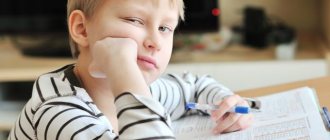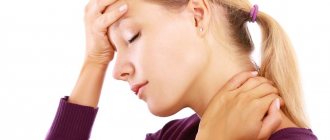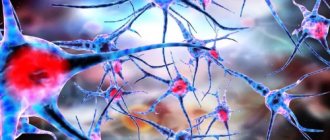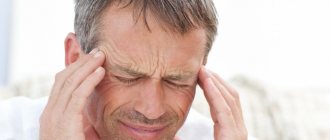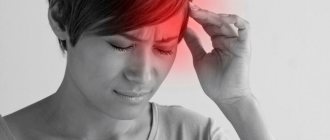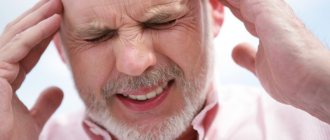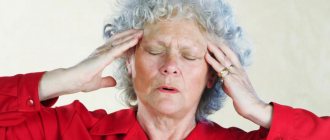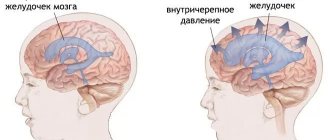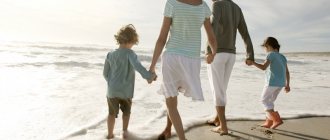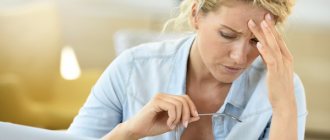No-spa is one of the most common and frequently used antispasmodics in pediatric practice. Antispasmodics are drugs that relax the smooth muscles of many internal organs, thereby relieving excess spasm (contraction) of smooth muscle cells. The mechanisms of action of these agents are different. We will not go into deep detail, but will only say that there are neurotropic and myotropic antispasmodics. Complex terms, the essence of which we will now explain. The mechanism of action of neurotropic antispasmodics is the blockade and disruption of the conduction of impulses from the nervous system to the muscles. In turn, the mechanism of action of myotropic antispasmodics is a direct effect on smooth muscle cells by changing the biochemical processes in them.
As you know, smooth muscle is found in many organs and systems of the body, for example, in the gastrointestinal tract, urinary and reproductive systems, respiratory system (especially in the bronchi) and others. Thus, the spectrum of action and indications for which antispasmodics can be used are quite extensive. One of the most common causes of pain is spasm (contraction) of muscle cells. Antispasmodics, eliminating spasms, have a pronounced analgesic effect.
In this article we will pay much attention to drotaverine, known as “No-shpa”. We will tell you about its release forms, price category, indications and contraindications, dosages, unwanted side reactions. We will also talk about other myotropic antispasmodics that can be used in children.
Release forms and price category
No-spa is available in the form of tablets, as well as in ampoules for intramuscular and intravenous administration. The dosage of one tablet is 40 mg of drotaverine hydrochloride. The tablets have a yellowish-greenish color and are bitter to taste. On one side there is a marking with the inscription “spa”. There are blisters of 6 and 24 pieces. For larger quantities, bottles with stoppers are used, which have 60, 64, 100 pieces. Ampoules are available in two milliliters. The amount of drotaverine per 1 ml of solution is 20 mg; only 2 ml of solution contains 40 mg of drotaverine hydrochloride. The ampoules are made of dark glass and have a marked break point for ease of opening.
No-spa is available in the form of tablets and ampoules.
The drug is affordable. It all depends on the manufacturer, but in any case, no-silo can be classified as a budget drug.
Indications and contraindications
No-shpa is most often used in pediatric gastroenterology. Indications for prescribing the drug are:
- Diseases of the gallbladder and bile ducts . The pathology of these organs is often accompanied by spasms. Such diseases include: inflammation of the gallbladder (cholecystitis) and bile ducts (cholangitis), cholelithiasis (calculous cholecystitis, cholangiolithiasis, cholecystocholangitis). It is worth noting that with the development of acute colic, a solution is used for intramuscular and intravenous administration. No-shpa is often used for inflammatory diseases of the stomach and intestines: gastritis, peptic ulcer, enteritis, colitis.
- Diseases of the urinary system . The need to use drugs in this case is also associated with spasms of smooth muscles. These diseases include: inflammation of the kidneys (pyelonephritis), inflammation of the bladder (cystitis), urolithiasis, etc. It is worth noting that with the development of renal colic, preference is given to a solution for intramuscular and intravenous administration, which makes it possible to achieve the desired concentration of the drug in a shorter time. drugs in the blood.
- It is used as an adjuvant in gynecology for dysmenorrhea . Dysmenorrhea is a pathological process in which girls experience severe pain in the lower abdomen during menstruation. In addition to pain, girls often experience nausea, dizziness, headaches, bloating, increased body temperature and other symptoms.
- Quite often, no-shpa is used as an antipyretic at fever . The fact is that there are two types of fevers in children: “pale” and “pink”. "Pink" is more favorable. “Pale” fever is accompanied by symptoms of microcirculation disorders, which are clinically manifested by pallor and “marbling” of the skin. The children's limbs are cold. There is a pronounced feeling of cold and chills. In order to eliminate such fever, you will need no-spa or another antispasmodic for parenteral (intravenous or intramuscular) administration. In addition to analgin, a solution of drotaverine (“No-shpa”) is administered at a dose of 0.1 ml per 1 year of life. The dosage of this product is given for informational purposes only. The choice of medication, as well as its dosage, should be made by the attending physician.
No-shpa is often used as an antipyretic.
Like any other medicine, no-spa has its contraindications:
- Severe liver, kidney, heart failure.
- The period of breastfeeding (lactation).
- Hypersensitivity to the active substance and other excipients included in its composition.
- Children's age up to 6 years. It is worth noting that in pediatric practice this drug is used at an earlier age.
- Malabsorption syndrome associated with lactose and galactose intolerance. Malabsorption is a malabsorption of a substance in the small intestine. As a rule, it is associated with a deficiency of a substance or enzyme that takes part in the absorption of this substance.
Treatment of headaches in children
What are the causes of headaches in children? What drugs are used to treat headaches? What non-drug treatments for headaches are used today?
Headache (cephalgia) in children is observed quite often and can serve as the main, or even the only symptom of more than 50 different diseases. Cephalgia is any unpleasant sensation that occurs in the area from the eyebrows to the back of the head (the term is derived from the Greek words cephal - brain and algos - pain).
It is known that 80% of European adults suffer from headaches. It can be assumed that the prevalence of cephalgia among children is approximately similar. Before 7 years of age, 75% of patients experience migraine-type headaches; however, the most common type of cephalgia is tension-type headache [1, 2].
The classification of the International Headache Society includes the following cephalgia: migraine; GB voltage; cluster (beam) headache and chronic paroxysmal hemicrania; headache not associated with structural brain damage; headache due to head injury; headache due to vascular diseases; headache due to intracranial non-vascular diseases; headache due to taking certain substances or their withdrawal; headache due to extracerebral infections; headache due to metabolic disorders; headache or facial pain due to pathology of the skull, neck, eyes, ears, nose, sinuses, teeth, mouth, or other facial or cranial structures; cranial neuralgia, pain due to pathology of nerve trunks and deafferentation pain; unclassifiable headache [3]. All of these types of cephalgia can occur in children, although in practice migraines, tension headaches, and cluster headaches are more common.
In general, in the etiopathogenesis of cephalalgia, areas of the dura mater can serve as sources of pain; arteries of the base of the brain and intracranial arteries; tissues covering the skull; nerves (including cranial nerves - trigeminal, glossopharyngeal, vagus, as well as the first and second cervical spinal roots) [1]. The morpho-functional basis of the peripheral part of the system responsible for pain sensitivity is the trigeminal nerve and the nucleus of its spinal tract. The dura mater and large blood vessels, as well as the sensory endings of the fibers of the second cervical root of the spinal cord, have pain receptors. The described systems form various types of headaches [4].
Headache can be caused by intracranial lesions, such as subdural and intracerebral hematomas, subarachnoid hemorrhages, thrombosis, arteriovenous malformations, brain abscess, meningitis, encephalitis, vasculitis, obstructive hydrocephalus, condition after lumbar puncture, ischemic cerebrovascular accident, stretching or inflammation of large intracranial vessels , damage to the dura mater of the base of the brain and sensory cranial nerves. Extracranial causes of headache include sinusitis, cervical spine injuries, temporomandibular joint syndrome, giant cell arteritis, glaucoma, optic neuropathy, and dental diseases. There are also “common” causes of headaches: fever, viremia, hypoxia, hypercapnia, arterial hypertension, allergies, anemia, as well as the action of vasodilators (nitrites, carbon monoxide, etc.) [5].
The pathophysiological features of the three main types of headaches in pediatric patients are discussed below, since these features determine different approaches to treatment.
Migraine. Classic migraine is characterized by two attack phases: in the first phase, vascular spasm occurs, causing cerebral ischemia and various focal symptoms that trigger the attack; in the second phase (transcranial and extracranial vasodilation), pulsating headache begins, which is distributed in the area of innervation of the trigeminal nerve and the upper cervical roots [6]. In migraine with aura, the mechanism of headache development involves paroxysmal depolarization of neurons in the cerebral cortex. In the first phase of the attack, cortical depression spreading at a speed of 2 mm per minute is observed in the region of the occipital pole of the brain. In the area of wave propagation, profound changes in the ion distribution occur, leading to a decrease in the level of cerebral blood flow. Cerebral ischemia results from arteriolar constriction. The most characteristic feature of classical migraine is general hypovolemia in the posterior part of the brain [7]. HD is caused by the effect of spreading depression on the trigeminal nerve fibers on the meninges, which releases vasoactive intestinal peptide, substance P and some other peptides [8]. The factors that trigger the mechanism of spreading cortical depression are very numerous. These include any disturbances in potassium homeostasis, genetic predisposition, stress, nutritional factors, as well as the release of vasoactive peptides from the trigeminovascular system.
With simple migraine (without aura), there are no significant changes in cerebral blood flow, and the mechanisms of its development themselves are difficult to explain [9]. In addition to vascular changes (characteristic of classic migraine), with simple migraine there are disturbances in metabolism and the concentration of neurotransmitters (serotonin and its metabolites).
The cause of migraine may be prostaglandin E1, tyramine or phenylethylamine (the latter two amines are found in chocolate and cheese) [10].
Tension headache. Previously it was believed that this type of headache is a direct consequence of repeated contractions of the muscles of the neck and temples, leading to local ischemia of these structures. In recent years, a number of other links in pathogenesis have been considered, including the involvement of “trigger” points of certain muscles (trapezius, sternocleidomastoid, suboccipital, temporal, etc.), compression of blood vessels by a spasmodic muscle with venous stagnation, spread of pain to the temporal, parotid and occipital areas due to dysfunction of the temporomandibular joint, impaired closure of the teeth of the upper and lower jaws, etc.
Cluster headache. The pathogenesis of the disease has so far been poorly studied and is not entirely clear, although it is known that with this type of headache in the external jugular vein there is an increase in the content of some pain peptides (calcitonin gene-related and intestinal peptide). As a result, a neurogenic origin of cluster headache with activation of sensory fibers of the trigeminal nerve is assumed. A defect in the chemoreceptors of the carotid bodies on the pain side, as well as disturbances in the secretion of certain humoral factors (melatonin, cortisol, testosterone, β-endorphin, β-lipoprotein, prolactin) may play a certain role.
Symptoms of headache. In each specific case, the symptoms of headache are determined by the type of cephalgia present. Below are the characteristics of various types of chronic and recurrent headaches according to a number of indicators (nature, location, duration of attack, frequency, associated symptoms). Simple migraine: headache character is pulsating; localization - one- or two-sided; duration of attack - 6-48 hours; frequency - sporadic attacks (up to several times a month); accompanying symptoms are nausea, vomiting, malaise, photophobia. Classic migraine: headache character is pulsating; localization - one-sided; duration of attack - 3-12 hours; frequency - sporadic attacks (up to several times a month); accompanying symptoms are visual aura, nausea, vomiting, malaise, photophobia. Facial migraine: the nature of headache is dull or pulsating; localization - unilateral, in the lower half of the face; duration of attack - 6-48 hours; frequency - sporadic attacks; accompanying symptoms are nausea, vomiting. Cluster headache (Horton's histamine cephalgia): the nature of the headache is sharp, boring; localization - unilateral (mainly in the orbital area); attack duration - 15-20 minutes; frequency - periods of daily attacks alternate with long-term remissions; associated symptoms - on the side of pain, lacrimation, facial flushing, nasal congestion and Horner's sign may be noted. Psychogenic headache: the nature of the headache is dull, compressive; localization - diffuse bilateral; the duration of the attack is often constant; frequency - often constant; accompanying symptoms are depression, anxiety. Trigeminal neuralgia: the nature of the pain is shooting; localization - in the zone of innervation of the trigeminal nerve; the duration of the attack is short-term (15-60 seconds); frequency - many times a day; accompanying symptoms—trigger zones are identified. Atypical facial pain: the nature of headache is dull, localization is unilateral or bilateral, the duration of the attack is often constant; frequency - often constant; accompanying symptoms are depression, sometimes psychosis. Headache due to sinusitis: headache type - dull or acute; localization - one- or two-sided, in the paranasal sinus area; the duration of the attack varies; frequency - sporadic or constant; associated symptoms are nasal discharge [11].
Diagnostics. A specific diagnosis in children is established primarily on the basis of clinical signs and the above-mentioned criteria for cephalgic syndromes. So-called headache diaries, some laboratory and instrumental studies (x-ray of the skull, computed tomography and magnetic resonance imaging of the brain, EEG, transcranial Doppler examination of cerebral vessels) can help in diagnosis. An important diagnostic measure is consultation with an ophthalmologist, and if a patient is suspected of having depression, consultation with a child psychiatrist is required.
The diagnosis of migraine is usually made on the basis of a collected medical history, and no significant changes can be detected with a thorough physical, neurological and ophthalmological examination. Diagnosis of most other cephalgic syndromes is carried out using a similar algorithm.
Approaches to headache treatment
Not all drugs used in the treatment of hypertension in adults can be used in pediatric practice due to age restrictions. A classic example is analgin (metamizole sodium), which in world practice is not prescribed to children under 14 years of age (in the Russian Federation - up to 6 years). Another drug that should be used with caution in patients under 16 years of age is the non-narcotic analgesic naproxen (nalixan).
Below we list modern approaches to the treatment of three main cephalgic syndromes - migraine, cluster headache and tension headache.
Migraine treatment. Preventive treatment is carried out only for recurrent cephalgia that is resistant to the emergency treatment used [5]. Migraine attacks should be treated only when we are talking about frequently recurring severe attacks that interfere with the child’s active life [12]. In some cases, one has to count on only a partial effect, although the administration of vasoconstrictors such as ergotamine and/or caffeine at the first symptoms of an attack can help stop it (in the Russian Federation, the drug caffeamine, which combines both of these components, is widely used). It is prescribed to children over 10 years of age twice, with an interval of 30 minutes, 1 tablet per dose (each tablet contains 0.1 g of caffeine and 0.001 g of ergotamine tartrate). The prescription of simple (non-narcotic) analgesics (paracetamol, etc.) is often no less effective.
In case of an acute attack of migraine, the regime must be combined with the use of analgesics: resting the child in bed (in a dark room) and taking paracetamol or acetylsalicylic acid. The latter is used with caution in pediatrics (in children under 2 years of age - only for health reasons) to avoid the development of Reye's syndrome [13]. It is paracetamol (at a dose of 15 mg/kg/day) that is the most effective and safe remedy prescribed for migraine attacks of moderate and severe severity. Acetylsalicylic acid is effective only for mild attacks [14]. Other drugs to treat severe attacks include naproxen, ibuprofen, phenacetin, or caffeine (alone or in combination with other drugs).
For children over 10 years of age, ergotamine is considered the drug of choice. It is prescribed orally at the very beginning of the attack (the dose depends on the dosage form used, the duration of treatment should not exceed 7 days). The drug is contraindicated in children who have hemianopia or hemiparesis during the constrictor phase of the attack.
Phenacetin, like paracetamol, is a non-narcotic analgesic. It is used 2-3 times a day in combination with drugs such as analgin (taking into account age), caffeine, etc. Its use is limited due to the presence of side effects (allergic reactions, “phenacetin” nephritis, methemoglobinemia, anemia, etc. .) [15]. Phenacetin is prescribed at the rate (single dose) of 0.15 g for 3-4 year old patients, 0.2 g for children 5-6 years old, 0.25 g for 7-9 year olds and 0.25-0 .3 g - for 10-14 year old children (for patients up to 1 year - 0.025-0.05 g, up to 2 years - 0.1 g per dose). In the Russian Federation, phenacetin is produced mainly in tablets containing 0.25 g of phenacetin itself and acetylsalicylic acid, 0.05 g of caffeine). Phenacetin is part of combination products (asphen, coficil, novomygrofen, pircofen, sedalgin, citramon, etc.).
Ibuprofen (Brufen) is a non-steroidal anti-inflammatory drug (NSAID). Children are prescribed at a rate of 20-40 mg/kg/day (3-4 times a day, per os or rectally) [13].
Naproxen is another NSAID prescribed to children under 5 years of age at a dose of 2.5-5 mg/kg/day in 1-3 doses (duration of treatment course - up to 14 days), and to patients over 5 years of age - at a dose 10 mg/kg/day [16].
Caffeine is a psychomotor stimulant, used in combination with other medications (analgesics, etc.). For children over 2 years of age (before this age the drug is not prescribed), caffeine is dosed at 0.03-0.075 g per dose (2-3 times a day). Caffeine is part of combination tablets (caffetamine, askofen, novomygrofen, cofitil, pyramein, citramon, etc.).
Sumatriptan (a selective 5-HT1 receptor agonist) is effective in the treatment of migraine attacks in adults. However, in the treatment of children with migraine, sumatriptan does not have any advantages compared to ibuprofen [17].
Preventive treatment. Propranolol for children is prescribed orally at an initial dose of 0.5-1.0 mg/kg/day 2 times a day, a maintenance dose of 2-4 mg/kg/day. In the presence of heart failure or bronchospasm, the drug is not used [13, 16].
Flunarizine is a calcium channel blocker. Children weighing up to 40 kg are prescribed a dose of 5 mg once a day. For other categories of children, flunarizine is prescribed in the same way as adults (20 mg 1 time in the first 2 weeks of preventive treatment, then 5-10 mg/day in 1-2 doses) [13].
Anticonvulsants of the phenobarbital or valproic acid class can in some cases prevent an attack, but are prescribed only for frequently recurring attacks. Dosages for both anticonvulsants are selected individually (under the supervision of a physician).
Tricyclic antidepressants (amitriptyline, etc.) are rarely used to prevent migraines (more often these drugs are used for tension headaches).
Symptomatic remedies. For nausea and vomiting, metoclopramide (cerucal, raglan) is used at a dose of 0.5 mg/kg (intravenously, intramuscularly or orally). In this case, chlorpromazine (an antipsychotic from the group of phenothiazine derivatives) and prochlorperazine are also used [5].
Chlorpromazine. To achieve a quick effect, you can use up to 3 age-specific doses of the drug (intravenously) every 15 minutes. When administered parenterally in children over one year of age, a single dose is 250-500 mcg/kg (the maximum dose in children under 5 years of age or weighing up to 23 kg reaches 49 mg/kg/day, and at the age of 5-12 years or with body weight 23-46 kg - 75 mg/kg/day). When administered orally to patients aged 1-5 years, the drug is prescribed in a daily dose of 500 mcg/kg (every 4-6 hours), children over 5 years old - from 1/3 to 1/2 the adult dose (a single dose for adults is 10- 100 mg, daily - 25-600 mg). The maximum dose for children under 5 years of age when taken orally is 40 mg per day, for patients over 5 years of age - 75 mg per day [16].
Non-drug treatments for migraines
Diet therapy. Since food allergies often play the role of a trigger factor for migraines in children, it is recommended to exclude a number of foods from the diet of a child suffering from migraines (milk, cheese, eggs, chocolate, oranges, products made from wheat and rye flour, tomatoes, etc.) [ 18]. Products with food additives such as monosodium glutamate and nitrites should be avoided [19].
Other non-drug approaches to the preventive treatment of migraine include wushu, karate, yoga, a biofeedback training system, and acupuncture.
Treatment of cluster headaches. Sumatriptan is widely used in the treatment of acute attacks of the disease. NSAIDs and ergotamine derivatives are considered less effective. Inhalation of pure oxygen is also included in the number of therapeutic measures for the development of attacks of cluster headaches (inhalation of 100% oxygen).
Preventive treatment of cluster headache involves the administration of β-blockers (propranolol, etc.), carbamazepine, lithium preparations, as well as prednisolone (a course lasting no more than 5 days) and calcium channel blockers (verapamil) [20]. The dosage of propranolol is given above.
Carbamazepine (Tegretol, Finlepsin) is an anticonvulsant (iminostilbene derivative). The average daily dose of the drug (orally) is 20 mg/kg/day (on average in children under one year - 0.1-0.2 g, 1-5 years - 0.2-0.4 g, 5-10 years - 0.4-0.6 g, 10-15 years - 0.6-1.0 g/day) [15].
Of the lithium preparations, lithium carbonate (contemnol, sedalite) is most often used. This mood stabilizer is taken during meals with water or milk. At the same time, the lithium content in the blood is controlled, maintaining its concentration at 0.5-1.0 mmol/l. At a dose of lithium carbonate of 1.0 g/day, normalization of lithium concentration should be expected after 10-14 days. The course of preventive monotherapy with lithium carbonate preparations should be at least 6 months [13].
Prednisolone. If necessary, in the first days of treatment, this corticosteroid hormone is prescribed (per os) at the rate of 1-1.5 mg/kg body weight/day, then the dose is reduced and the drug is discontinued [16].
Verapamil (isoptin, phenoptin) is a calcium channel blocker. Taken orally during or immediately after meals (in 2-3 doses). The drug is taken with a sufficient amount of liquid. For children aged 1-15 years, the dosage is 0.1-0.3 mcg/kg/day (single dose no more than 2-5 mg) [13, 16].
Treatment of tension headaches. In this disease, the leading role belongs to the treatment of NSAIDs. In addition, a combination of NSAIDs with diazepam (Seduxen, Relanium) can be used. The latter is prescribed (when taken orally) in the following single dosage: 1-3 years - 0.001 g, 3-7 years - 0.002 g, 7 years and more - 0.003-0.005 g [13].
Tizanidine (sirdalud) is a centrally acting muscle relaxant widely used in the treatment of tension-type hypertension in adults. Experience with its use in children is limited [16].
Tricyclic antidepressants (amitriptyline, imipramine). Regardless of age and route of administration (orally, intramuscularly, intravenously), amitriptyline is prescribed from 0.05-0.075 g/day, gradually increasing the dose by 0.025-0.05 g until the effect is achieved [15]. Imipramine (melipramine, imizin) is prescribed to children starting from 0.01 g 1 time per day, gradually (over 10 days) the dose is increased to 0.02 g for children 1-7 years old, to 0.02-0.05 g for children 8-14 years of age (patients over 14 years old - up to 0.05 g or more per day).
Literature
- Yakhno N. N., Parfenov V. A., Alekseev V. V. Headache: A reference guide for doctors “R-Doctor”. Series "Nosologies". M., 2000. 150 p.
- Chu ML, Shinnar S. Headaches in children younger than 7 years of age // Arch. Neurol. 1992. vol. 49. P. 79-82.
- Headache Classification Committee of the International Headache Society. Classification and diagnostic criteria for headache disorders, cranial neuralgias and facial pain // Cephalalgia. 1988. V. 8. Suppl. 7.96 p.
- Goadsby JP Update of the anatomy and physiology of headache // Abstr. of 2-d Congress Eur. Fed. Chapt. of IASP. Barcelona. 1997. P. 79.
- Therapeutic reference book of the University of Washington / Ed. M. Woodley, A. Whelan; lane from English M.: Practice. 1995. 832 p.
- Dalessio DJ Wolff's headache and other head pain. Oxford University Press. New York. 1980.
- Oleson J., Edvindsson L. Migraine: a research field matured for the basic neurosciences // Trends Neurosci. 1991. Vol. 14. P. 3-5.
- Lauritzen M. Pathophysiology of the migraine aura. The spreading depression therapy //Brain. 1994. Vol. 117. P. 199-210.
- Ferrari MD Cerebral blood flow during migraine attacks without aura and effect of sumatriptan // Arch. Neurol. 1995. Vol. 52. P. 135-139.
- Congden PJ, Forsythe WI Migraine in childhood: a study of 300 children // Dev. Med. Child Neurol. 1979. Vol. 21. P. 209-216.
- Neurology/Ed. M. Samuels; Per. from English M.: Practice. 1997. 640 p.
- Child Neurology (Menkes JH, Sarnat HB, eds.).-16th ed. Lippincott Williams and Wilkins. Philadelphia-Baltimore. 2000. 1280 p.
- Vidal Directory. Medicines in Russia: Directory. 8th ed., revised. and additional M.: AstraPharmService. 2002. 1488 p.
- Hamalainen ML Ibuprofen or acetaminophen for the acute treatment of migraine in children. A double-blind, randomized, placebo-controlled, crossover study // Neurology. 1997. Vol. 48. P. 103-107.
- Mashkovsky M.D. Medicines. In 2 hours. 12th ed., revised. and additional M.: Medicine. 1993.
- Register of Medicines of Russia “Encyclopedia of Medicines”/ Ch. ed. G. L. Vyshkovsky. 9th ed., revised. and additional M., RLS-2002. 2002. 1504 p.
- Hamalainen M.L., Koppu K., Santavuori P. Sumatriptan for migraine attacks in children: a randomized, placebo-controlled study // Neurology. 1997. Vol. 48. P. 1100-1103.
- Egger J. Is migraine a food allergy? // Lancet. 1983. Vol. 2. P. 865-869.
- Wilkinson M. Migraines and headaches / Transl. from English K.: “Sofia.” 1997. 112 p.
- Clinical recommendations based on evidence-based medicine / Trans. from English edited by I. N. Denisova, V. I. Kulakova, R. M. Khaitova. M.: GEOTAR-MED, 2001. 1248 p.
Dosage of the drug
Parents often ask questions: “Is it possible to give no-shpa to children? How much to give no-shpa to a child? How to give? According to the instructions for the drug, no-spa is used in children over 6 years of age. From 6 to 12 years it is recommended to take one tablet (40 mg) 1-2 times a day. In children over 12 years of age, it is possible to use one tablet (40 mg) 1-4 times a day.
As mentioned earlier, no-shpa is also used in children under 6 years of age (from 1 year). At the same time, doctors monitor the baby’s condition.
The optimal dosage regimen is determined by the attending physician. It is necessary to strictly observe the compliance of the dosage form of no-shpa with the indications for its use and dosage regimen.
It is necessary to strictly observe the indications for use and dosage regimen.
Other antispasmodics used in pediatrics
In addition to no-shpa, antispasmodics such as:
- Riabal. The active ingredient is profinium bromide. Riabal is the drug of choice in young children.
- Dicetel.
- Mebeverine.
- Papaverine.
No-spa is the most common antispasmodic. Like any other drugs, it has its own indications and contraindications. The advantage of this drug is the availability of oral and parenteral forms, which allow it to be used as emergency treatment for many conditions in children. Do not self-medicate; if your child experiences pain or discomfort, consult your pediatrician.
Diagnostic and treatment methods
Diagnosis of headaches in a child at the Clinical Brain Institute uses modern equipment and a team of specialized specialists. When the first symptoms appear, you should consult a pediatrician, and then you may need to consult an ophthalmologist, neurologist, surgeon, or otolaryngologist. To make an accurate diagnosis, a number of examinations are carried out:
- ultrasound diagnostics of cerebral vessels;
- X-ray of the cervical spine;
- MRI of the head is one of the most informative methods;
- electroencephalography - assessment of the functioning of various nervous structures.
Treatment is selected individually. In most cases, the headache goes away with age, but in some patients it persists throughout life. At home, you should provide your child with adequate rest and the required level of physical activity, minimize screen time, and provide adequate nutrition. Drug treatment includes taking analgesics (painkillers), antispasmodics, vitamins and drugs for correcting cerebral circulation. In our clinic you can get more detailed recommendations for the treatment of headaches in children of different ages, depending on the results of the examination.
